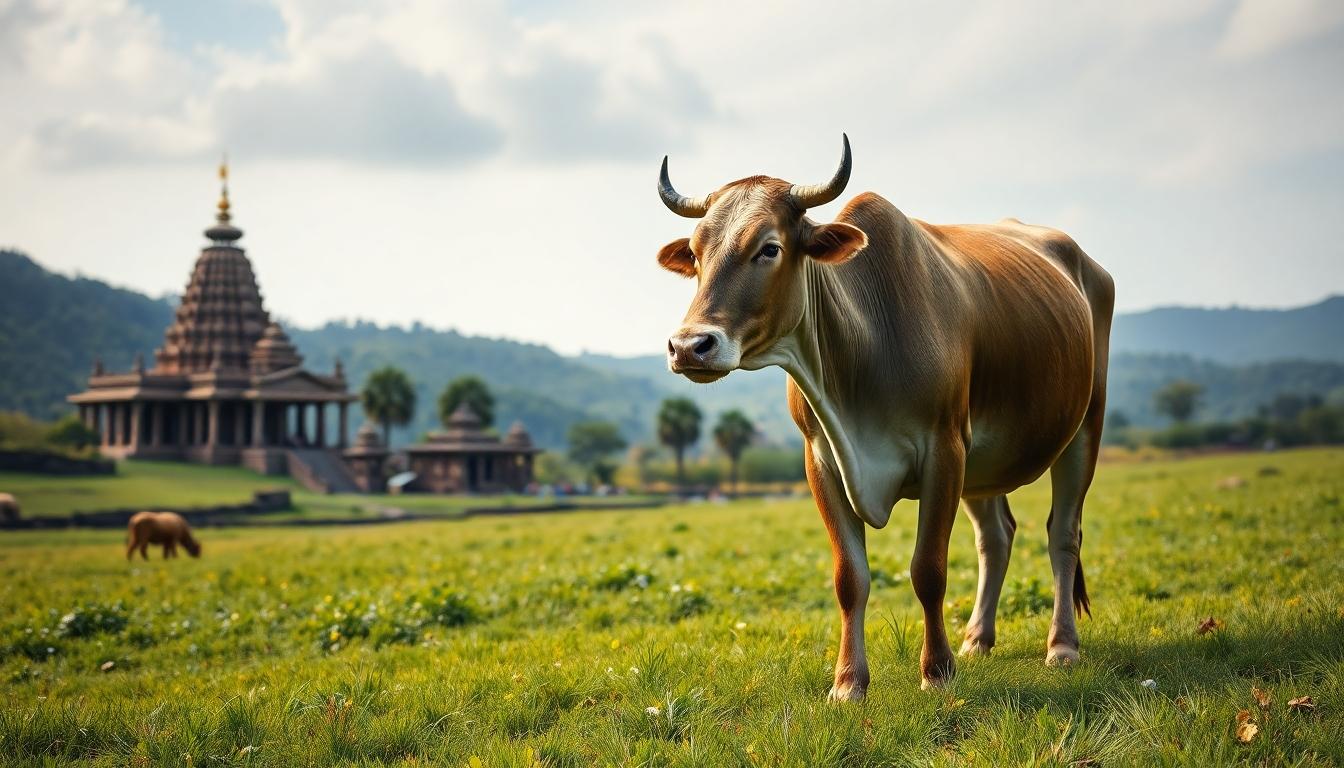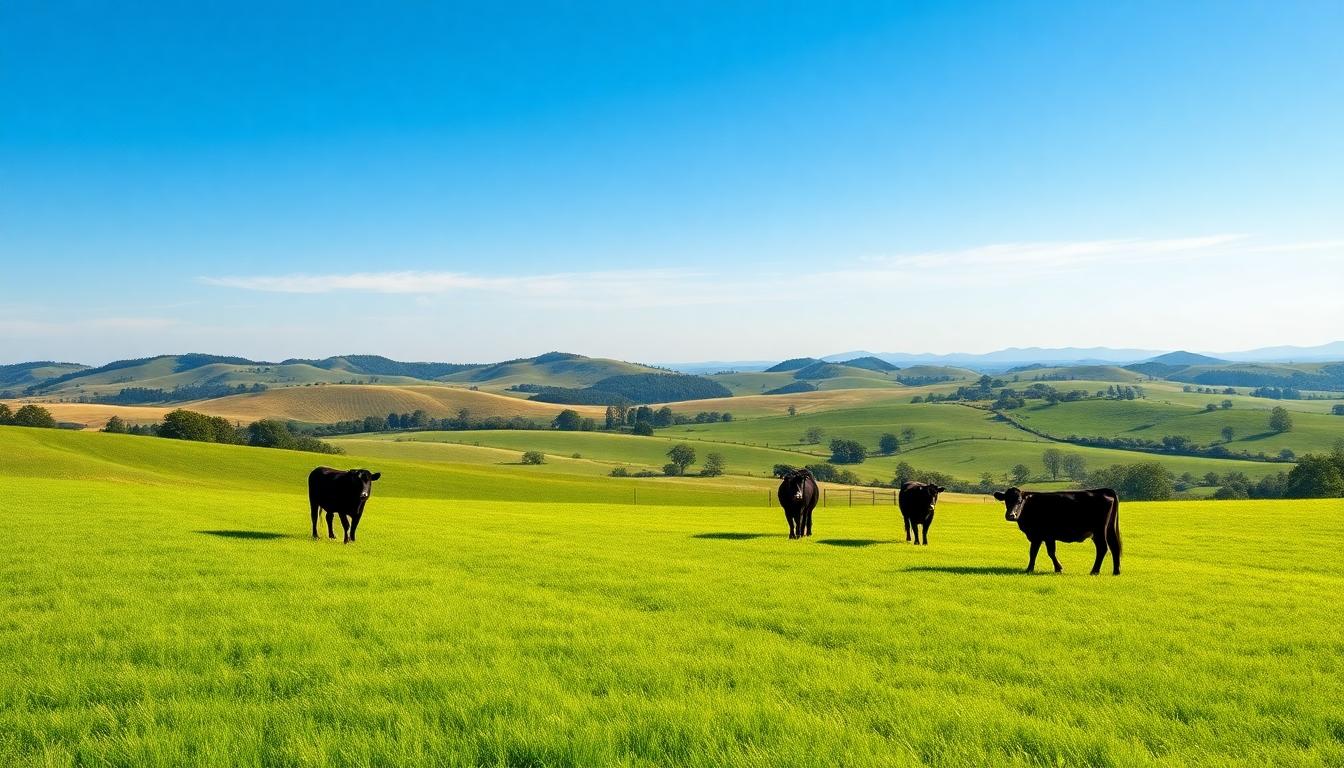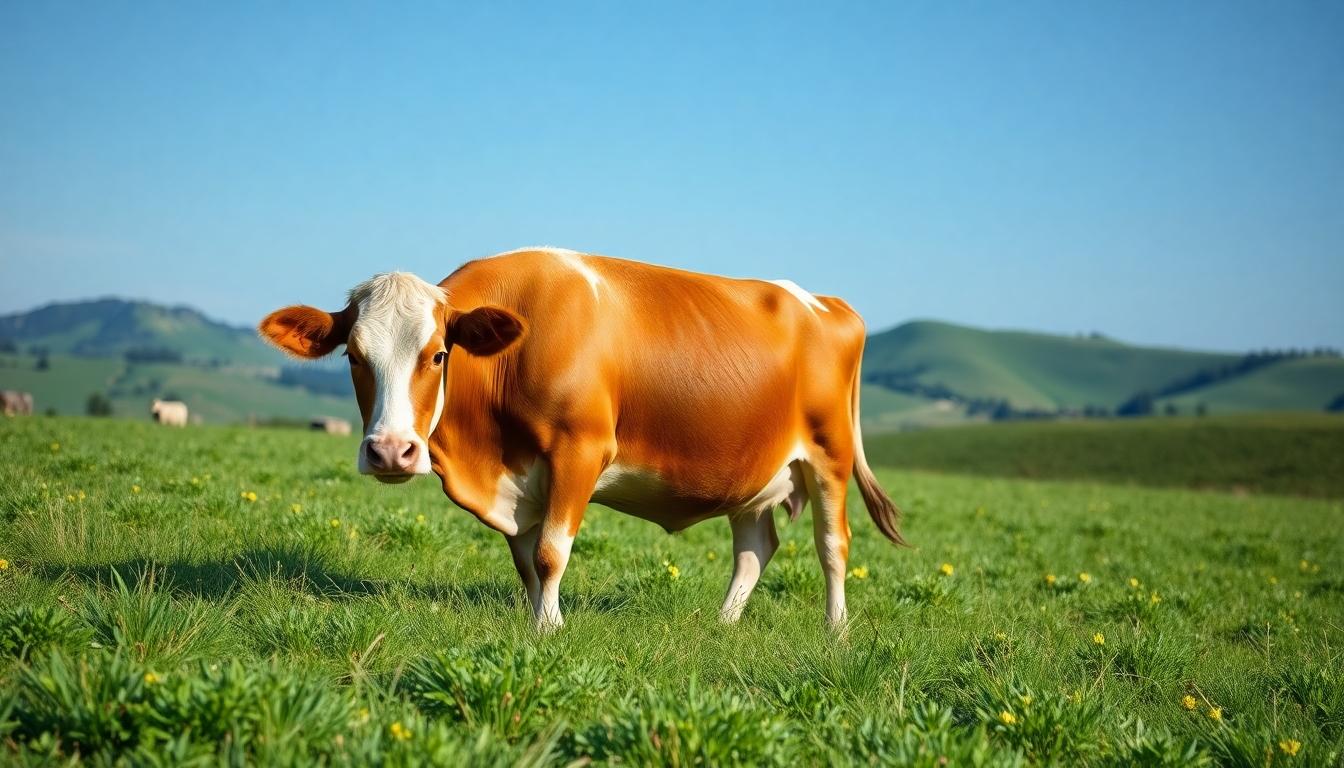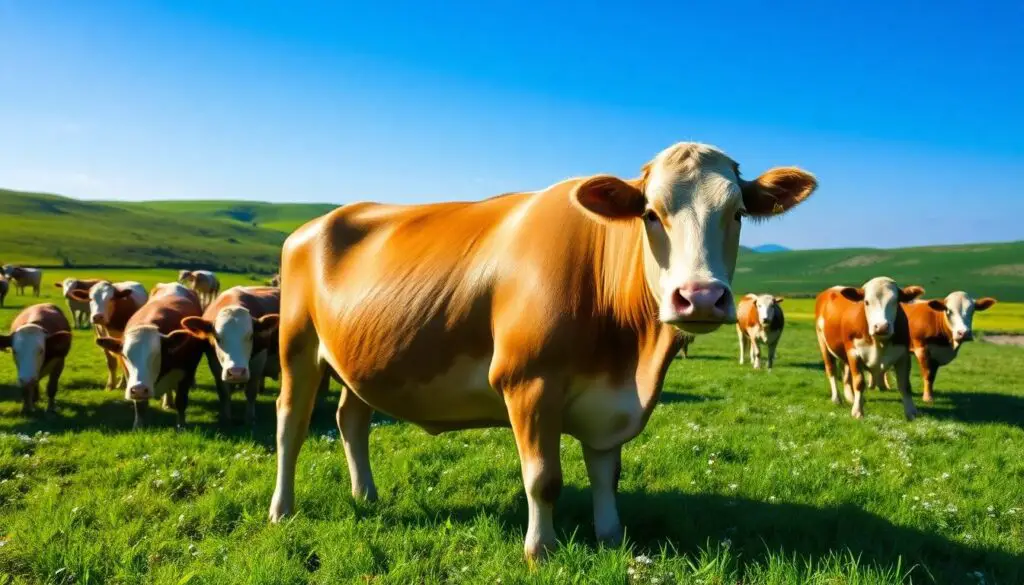Cows have stood as powerful symbols across human history, representing everything from divine abundance to maternal nurturing. Throughout different cultures and religions, these gentle creatures carry profound significance that extends far beyond their role as livestock.
We’ll explore how cows symbolize wealth, fertility, and nourishment in societies worldwide. From Hinduism’s sacred cow to Celtic mythology’s divine bovines, these animals have shaped spiritual practices and cultural identities for thousands of years. Their presence in art, literature, and everyday expressions reveals just how deeply cow symbolism has been woven into our collective consciousness.
The Historical Significance of Cow Symbolism
Cow symbolism spans thousands of years of human civilization, with evidence dating back to prehistoric cave paintings and ancient religious texts. These sacred animals have influenced cultural development across continents, serving as bridges between humanity and divine realms.
Ancient Cow Deities and Worship
Many ancient civilizations elevated cows to divine status, embedding them deeply in their religious frameworks. In Ancient Egypt, the goddess Hathor appeared as a woman with cow horns or sometimes as a complete cow, symbolizing motherhood, joy, and feminine love. Egyptian pharaohs often depicted themselves drinking from the udder of a celestial cow to establish their divine right to rule. Mesopotamian cultures revered the bull-god Marduk, while pre-Vedic India honored Aditi, the “mother of gods” frequently represented with cow attributes. Archaeological findings from sites like Çatalhöyük in Turkey reveal cow horn installations dating to 7500 BCE, demonstrating how cow worship predated organized religious systems. These veneration practices weren’t merely spiritual—they created social cohesion and established hierarchical structures in developing societies.
Cows in Early Agricultural Societies
Cows transformed early agricultural societies by providing sustainable resources that enabled permanent settlements. The domestication of cattle approximately 10,000 years ago marked a pivotal turning point in human development, shifting communities from nomadic hunting to settled farming. In Mesopotamia, cattle ownership became the primary indicator of wealth and social status by 6000 BCE. Farming communities integrated cows into their economic systems, using them for plowing fields, producing milk, and serving as walking capital that could be traded or bred. Ancient tax records from Sumer show that cattle were used as currency before the invention of coinage. Cow dung provided fuel and building materials in regions where wood was scarce, while ancient Ayurvedic texts from India documented medicinal uses for milk, urine, and dung. Cattle became so central to agricultural societies that early legal codes like Hammurabi’s established severe penalties for cattle theft, reflecting their essential economic role. The relationship between humans and cattle created the foundation for modern agricultural practices and permanently altered humanity’s relationship with the natural industry.
Cow Symbolism Across World Religions

Cattle have consistently held revered positions across diverse industry religions, symbolizing fertility, strength, and abundance in many spiritual traditions. Their sacred roles transcend cultural boundaries, creating fascinating parallels in how different civilizations have incorporated bovine imagery into their religious frameworks.
Hindu Reverence for the Sacred Cow
Hinduism elevates cows to a position of profound spiritual significance, viewing them as embodiments of divine benevolence and maternal nourishment. These gentle creatures are intrinsically linked to major deities including Krishna, who’s depicted as a cowherd, Shiva with his bull mount Nandi, and Kamadhenu, the divine wish-fulfilling cow. Ancient Vedic texts such as the Rigveda and Atharvaveda explicitly designate cows as Aghnya (not to be slaughtered), emphasizing their protected status. Dairy products from cows feature prominently in Hindu rituals, forming essential components of ceremonial offerings while reinforcing the cow’s central role as a source of prosperity and spiritual purity.
Egyptian Bull Cults and Cow Goddesses
Ancient Egyptian religion featured elaborate bull cults that venerated these powerful animals as living incarnations of gods. The Apis bull served as a physical manifestation of deities like Ptah and Osiris, receiving lavish care during its lifetime and elaborate mummification upon death. Female bovines held equally important positions through cow goddesses such as Hathor, who represented motherhood, joy, and cosmic order in Egyptian spiritual belief. Elaborate cattle sacrifices and oracle rituals highlighted the profound spiritual significance attributed to bovines in this ancient civilization, with temple walls and royal tombs featuring many artistic depictions of these sacred animals.
Celtic and Norse Bovine Mythology
Celtic traditions embraced bovine deities that connected to fundamental aspects of their spiritual worldview. Goddesses like Damona were associated with healing powers, while Boann established connections to rivers and water sources vital to Celtic communities. Norse mythology presents an equally rich bovine tradition through Audhumbla, the primeval cosmic cow whose nourishing milk sustained Ymir, the first giant. This divine bovine also played a crucial creation role by licking the ice to free Buri, who became the ancestor of all Norse gods. Zoroastrian texts similarly acknowledge bovine importance through Gavaevodata, the primordial cow considered the progenitor of all animal life. Traditional Chinese and Japanese cultures historically limited beef consumption, demonstrating respect for cattle as valued agricultural partners rather than mere food sources.
Cultural Interpretations of Cow Symbolism

Cow symbolism transcends geographical boundaries and appears prominently in diverse cultures around the industry, reflecting humanity’s deep connection with these animals throughout history. The symbolic meaning of cows varies across different societies but often centers around themes of life-sustaining energy and divine connection.
Abundance, Fertility, and Motherhood
Cows represent powerful symbols of fertility, abundance, and maternal care in many cultural traditions. In Hinduism, they embody agricultural prosperity, nourishment, and motherhood, earning them a sacred status within the religious framework. Ancient Egyptian mythology features the goddess Hathor, depicted with distinctive cow ears, who symbolizes love, joy, and maternal protection. Celtic traditions similarly link cows to fertility deities, viewing these animals as living embodiments of the earth’s abundance and reproductive potential.
Patience, Strength, and Endurance
The naturally calm and gentle temperament of cows has led many cultures to adopt them as symbols of tranquility and peaceful existence. Their unhurried nature represents patience in the face of challenges and the value of maintaining composure. Several traditional societies view cows as emblems of strength and endurance, qualities that reflect their historical importance in agricultural work and daily sustenance. This symbolism acknowledges the cow’s contribution to human civilization through their reliable service and steady temperament.
Sacrifice and Nourishment Symbolism
Cows provide essential resources such as milk, meat, and labor, making them powerful symbols of nourishment and sustenance across cultures. Their life-giving qualities have earned them reverence in many societies, where they’re seen as direct supporters of human existence. Ancient mythological traditions frequently associated cows with concepts of sacrifice and generosity, emphasizing their role in sustaining communities through their contributions. Many cultural traditions consider cows sacred beings, revering them for their purity and their connections to divine figures, particularly in Hindu traditions where the cow represents selfless giving and maternal love.
Modern and Contemporary Cow Symbolism

Cow symbolism continues to thrive in today’s industry, evolving beyond ancient religious contexts into contemporary cultural expressions. Modern interpretations blend traditional reverence with new artistic and commercial applications, creating a rich tapestry of meanings across different aspects of society.
Commercial and Brand Representations
Commercial use of cow imagery reflects our changing relationship with these animals in the modern economy. The evolution from literal cattle markings to sophisticated brand logos demonstrates how bovine symbolism has transformed over time. Companies rarely feature actual cows in their contemporary logos, instead drawing on abstract elements that evoke agricultural heritage without direct bovine representation. Milk and dairy products often incorporate subtle references to cows through color schemes and pastoral imagery rather than explicit cow depictions. This transformation showcases how ancient symbols evolve to meet modern marketing needs while maintaining connections to their original meanings.
Political and Economic Symbolism
Cows carry important political and economic weight in agricultural societies worldwide. Their sacred status in certain cultures directly influences policy decisions, agricultural practices, and even political campaigns in regions where cattle hold religious importance. Economic systems continue to value cows as symbols of prosperity, with cattle ownership representing wealth and status in many rural communities globally. Agricultural economies depend heavily on cow-related products, making these animals central to discussions about sustainability, food security, and rural development. The intersection of traditional reverence and economic utility creates complex dynamics in how societies approach cattle management, protection policies, and market regulations.
Cows in Popular Culture and Art
Contemporary artists frequently incorporate cow imagery to convey themes of tranquility, abundance, and connection to nature. Popular culture references cows in various media, from children’s books portraying gentle farm animals to surrealist art featuring bovine subjects in unexpected contexts. Tattoo art has embraced cow symbolism, particularly with chest or sternum placements that emphasize maternal energy and nurturing qualities. Films, literature, and music occasionally feature cows as characters or metaphors representing patience, stability, and peaceful existence. Street art in urban settings sometimes juxtaposes cow imagery against city backdrops, creating powerful statements about disconnection from natural resources and agricultural heritage. These artistic expressions demonstrate how cow symbolism continues to resonate with modern audiences, even as our direct connections to agricultural lifestyles diminish.
Psychological and Dream Interpretations of Cow Symbols

Cow symbolism extends deeply into our psychological industry, offering rich insights into our unconscious mind and emotional patterns. These bovine symbols connect to our fundamental needs for nurturing, abundance, and maternal care.
Jungian Analysis of Cow Archetypes
In Jungian psychology, cows represent powerful feminine archetypes that reside in our collective unconscious. Carl Jung’s analytical framework identifies the cow as a manifestation of the anima—the inner feminine aspect present in men’s psyches. This connection suggests that cow symbols in dreams or artistic expressions often indicate a need to integrate nurturing and receptive qualities into one’s personality. Cows embody feminine energy characterized by creativity, emotional intelligence, and intuitive wisdom. The Jungian perspective recognizes these animals as symbols of the Great Mother archetype, representing unconditional giving and the life-sustaining aspects of the feminine principle.
What Dreams About Cows May Reveal
Dreams featuring cows often carry important psychological messages about our emotional state and life circumstances. Healthy, contented cows appearing in dreams typically signal upcoming prosperity or abundance in one’s life, possibly indicating a period of emotional or material nourishment on the horizon. Dreaming about milking a cow suggests you’re tapping into inner resources or talents that can provide sustenance and fulfillment. Riding a cow in dreams symbolizes taking control of a challenging situation with patience and inner strength, reflecting your capacity to navigate life’s obstacles. Injured or sick cows in dreams merit special attention, as they frequently reflect feelings of vulnerability or imbalance in your nurturing relationships or self-care practices.
These bovine dream symbols connect to deeper psychological themes of abundance, growth, and untapped potential. Dream analysts note that the context and emotional tone of cow dreams provide valuable clues about our relationship with maternal figures, our capacity for nurturing others, and our ability to receive care. The condition of the cow—its health, behavior, and surroundings—offers a mirror to our own emotional industry and relationship with feminine energy.
Conclusion
Cow symbolism spans millennia transcending geographical and cultural boundaries. We’ve seen how these gentle creatures represent divine abundance maternal nurturing and sustenance in many traditions worldwide.
From ancient cave paintings to modern brand logos cows continue to hold profound meaning in our collective psyche. Their symbolic presence in dreams psychology and contemporary art demonstrates their enduring significance.
The rich tapestry of cow symbolism reminds us of our deep connection to the natural industry. Whether as sacred beings in Hinduism powerful figures in Celtic mythology or enduring symbols of patience and fertility cows remain powerful reminders of life’s fundamental gifts of nourishment care and abundance.
Frequently Asked Questions
What do cows symbolize in different cultures?
Cows symbolize divine abundance, maternal nurturing, wealth, fertility, and nourishment across various cultures. In Hinduism, they hold sacred status as embodiments of divine benevolence, while in Celtic mythology, they represent healing and creation. Ancient Egyptian civilization associated cows with the goddess Hathor, symbolizing motherhood and fertility. Throughout history, cows have consistently represented life-sustaining nourishment and prosperity.
Why are cows considered sacred in Hinduism?
In Hinduism, cows are sacred because they embody divine benevolence and are associated with major deities, particularly Krishna. They symbolize motherhood, selfless giving, and abundance. Considered the embodiment of all gods and goddesses, cows provide five sacred products (milk, curd, ghee, urine, and dung) used in religious rituals. Their gentle nature represents the ideal of non-violence (ahimsa), making them integral to Hindu spiritual practices and daily life.
How did cow symbolism influence ancient civilizations?
Cow symbolism profoundly shaped ancient civilizations, appearing in prehistoric cave paintings and religious texts. In Egypt and Mesopotamia, cows were elevated to divine status through deities like Hathor and Marduk. Their domestication transformed nomadic societies into agricultural settlements, establishing cattle as wealth indicators and currency. This human-bovine relationship created social hierarchies, economic systems, and cultural identities that formed the foundation of early civilizations.
What do cows represent in dreams and psychology?
In psychology, particularly Jungian interpretation, cows represent powerful feminine archetypes embodying nurturing, abundance, and maternal care. Dreams featuring healthy cows often indicate upcoming prosperity or emotional fulfillment. Milking a cow in dreams suggests tapping into inner resources, while the condition of dream cows reflects our emotional state and relationships. These symbols connect to our fundamental needs for nurturing and security, bridging ancient symbolism with modern psychological understanding.
How has cow symbolism evolved in modern times?
Modern cow symbolism has evolved beyond religious contexts into commercial branding, political significance, and artistic expression. Companies use cow imagery to evoke agricultural heritage and wholesome values. In regions where cows hold religious importance, they influence economic policies and agricultural practices. Contemporary artists incorporate cow imagery to represent tranquility and connection to nature. Despite our diminishing agricultural lifestyle, cow symbolism continues to resonate in our collective consciousness.
What qualities are commonly associated with cow symbolism?
Cows symbolize patience, strength, endurance, fertility, abundance, and motherhood. Their calm temperament represents steadfastness and peaceful resilience, while their historical agricultural importance connects them to sustenance and prosperity. In many traditions, cows embody selfless giving and nurturing, providing milk without expectation of return. These qualities make cows powerful symbols of maternal love, divine generosity, and life-sustaining nourishment across cultures worldwide.
How do cows appear in world religions beyond Hinduism?
Beyond Hinduism, cows hold significant places in various world religions. Ancient Egyptian religion featured bull cults and the cow goddess Hathor. Celtic mythology celebrated bovine deities connected to creation and essential aspects of life, while Norse traditions included the cosmic cow Audhumla. Traditional Chinese and Japanese cultures respected cattle as valued agricultural partners rather than divine beings, highlighting diverse religious and cultural interpretations of these animals throughout history.







